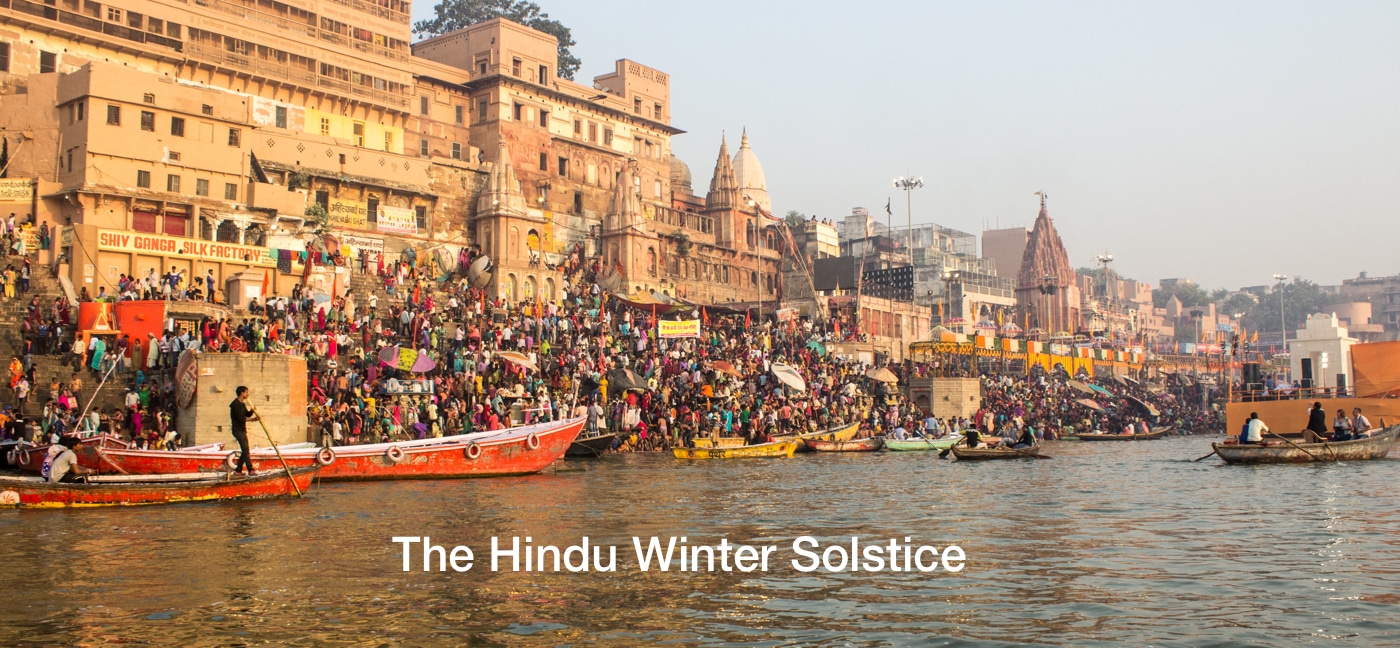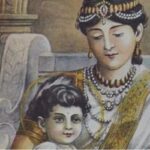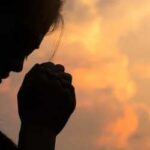The Hindu Winter Solstice

Be of good cheer, for the long winter nights are now giving way to the sunnier days of spring. According to the Hindu calendar, January 14th is the winter solstice, when the sun begins its journey to the northern Hemisphere, and the days start becoming longer again.
For Hindus, this is a cause for celebration. The fourteenth of January is called Makar Sankranti, the day when the sun enters the constellation of Capricorn. It is one of the few Hindu festivals based on the movement of the sun, rather than the moon. The day is known by different names throughout India, but the mood of celebration is the same everywhere.
Makar Sankranti is a day when friendships are renewed, grudges are forgotten, and mistakes are forgiven. People go to the homes of relatives, friends, and acquaintances with gifts and good wishes. They bring with them sweets made of sesame, and feed each other, saying “Let there be only sweet words between us.” In India, people bathe in sacred rivers or lakes, and make offerings to the sun-god, in gratitude for his light and warmth. In celebration of the harvest, and in preparation for spring, families buy new cooking utensils and cook in them for the first time.
Once in 12 years, January 14th is even more special than usual, because an event of mammoth proportions takes place in Prayag, Allahabad, India. It is called Kumbha Mela, and an estimated 100 million people gathered the last time it happened (in 2013) to bathe in the sacred waters of the Ganges and Yamuna rivers. The festival lasts more than a month, but January 14th is one of the most important bathing days.
It said that during this time the nectar of immortality flows from heaven, reaching earth at the confluence of the three rivers Ganga, Yamuna, and the Sarasvati. Those who bathe there have their sins washed away and achieve liberation from repeated birth and death.
UNESCO has called this event an “intangible cultural heritage of humanity.” The Guinness Book of Records calls it the “greatest recorded number of human beings assembled with a common purpose” in history. This common purpose was to express their conviction in God by performing a massive, single act of faith.
The Kumbha Mela and Makar Sankranti bear witness to the power that faith has, even in our own day, to move and unite humanity, whether it be through the cool waters of the Ganges or the little white sesame seeds.
Ravi Gupta is the Director of the Religious Studies Program at Utah State University. He is the author or editor of four books, including an abridged translation of the Bhagavata Purana.



